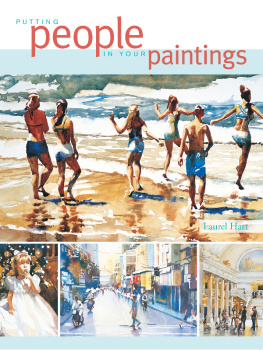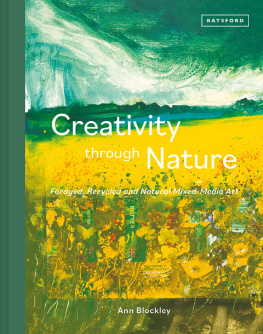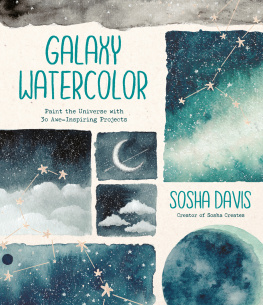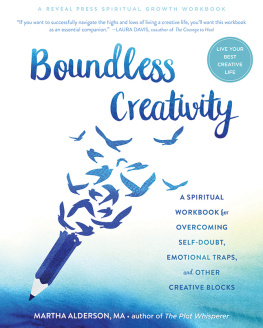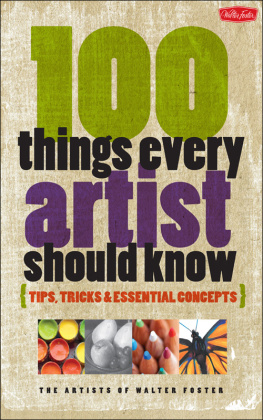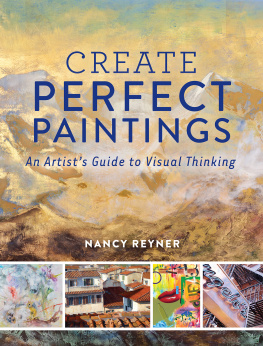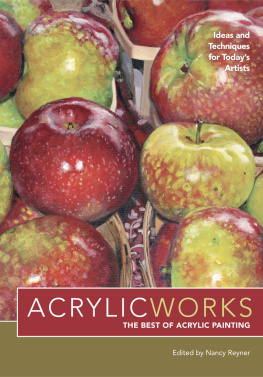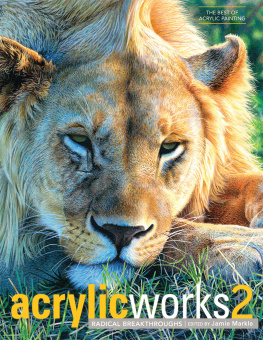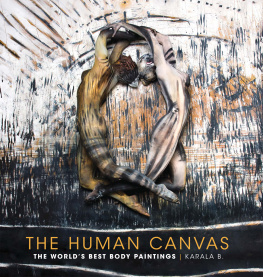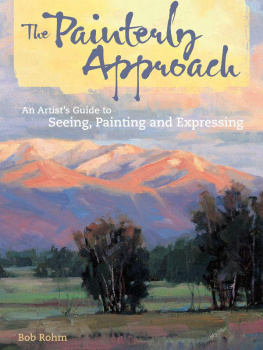To my friends: Tammy Pittenger, Marian Bach, Alan Javurek, Duane Couch, Dana Dion, Vera Tchikovani, Paulette Insall, Brent Bailey, David Goodman, Suzanne Feinberg, and Katherine Aimone
D. W. Winnicott
My friends and mentors: Sharon Mayes, Peter Rosenbaum, MD , Jeff Reichenthal, MD , John Shillito, MD and Arthur Fry, Ph.D .
Introduction
My lifes dream and the work of my life is to help people believe in themselves, and especially in their creative process as artists.
The big idea of this small book is to give you a map for unleashing your creativity, plumbing the depths of your psyche, and expressing your own personal and authentic art so you can finally express you in your paintings
The art of activating the canvas and bringing a painting to life with your own personal language of mark-making, expressive gestures, and brushwork is nothing short of miraculous. To create authentic and alive abstract paintings that are unique to you and your own vision is the ultimate attainment for an artist and yet, the most elusive.
One issue youll face as an artist is that you can get stuck repeating whats worked for you before or trying to recreate what you love about other artists work.
I think every artist goes through a cycle of feeling inspired by artists they admire and trying to create something similar. Eventually you start feeling like youre creating copies, and it gets boring, no longer gratifying, because what you really want is to create and share work thats uniquely yours. You want to feel like a real artist whose work comes from inside you, from your own source.
So the problem you encounter as an artist is that you finally want to make work that comes from you , and the challenge is that you dont know how to make that shift.
This is where I come in. Im going to guide you to dive deeply into the inner shift thats essential for creating deep and personal art.
Im going to help you discover a profound secret, something foundational. Its a secret that threads through all my work, and through my courses and workshops with hundreds of artists. By the time you reach the end of this book, youll be liberated to express your own personal marks, lexicon, and gestures, to explore and experiment and create your most alive, personal, and authentic work.
About the Author: Im an abstract artist and Stanford-trained existential psychiatrist with a practice spanning over twenty years. Ive found psychiatry to be relational, intuitive and creative. The nuances of delving into unknown territory in the psyche are similar to the experience of creating an abstract painting. Psychiatry began informing my art in the unfolding expressions of the person sitting across from me in session. As a visual person, never forgetting a face, I hold images in my mind which find their way into my art. One of my paintings came from the feelings of a client who was lonely after a breakup.
Likewise, inspiration for my work in psychiatry has been deeply influenced by art. In art you must stay open and flexible, allowing the painting to unfold. Theres a conversation with the emerging marks and brush strokes and your responses to them. Its an ongoing process of inquiry and investigation. In painting, as in life, though there are problems to be solved theres also the ineffable, the mystery to be experienced.
My passions for psychiatry and art led me to combine the two and become an art psychiatrist, guiding artists to face their fears and create from the deep well of their own voice and vision.
My first exposure to art was as a young girl growing up in Arkansas, staring for hours at reproductions of Rembrandts Young Woman with a Broom and Man with a Gold Helmet that hung in my home.
I studied from every angle the warrior sculpture in our living room. I marked up every scratchpad with red and purple crayons and colored the rocks and tree bark in our back yard. Fascinated by the variety of colors and textures of the twenty-six-foot-wide reclaimed-brick wall my father built in our den, I embellished it further with colorful scribbles.
Later, when I was twenty-six and training in radiology at Harvards Brigham and Womens Hospital, I dreamt of creating abstract watercolors and writing poetry, but the rigors of residency didnt allow much free time to explore creative interests.
Though radiology was intellectually challenging and visually compelling, it didnt feed my inner artist. I eventually switched to psychiatry, which felt closer to my creative interests. Hearing of my decision, John Shillito, the minence grise of neurosurgery at the Brigham, said, Youre going from shadows to nuances.
I never looked back. After moving to the Bay Area and beginning my residency in psychiatry at Stanford I had an aha moment that changed the course of my life. Randall Weingarten, a friend and psychiatrist, invited me to a tea ceremony and poetry reading at the San Francisco Zen Center Green Gulch Farm. Something about that night was revelatory. I realized that I was missing art and beauty. I knew in that moment that I needed more than medicine in my life, and I was determined to begin my artists journey.
The final day of seven years of residency training in internal medicine, radiology, and psychiatry, I announced that I would now begin my journey of studying art. Finding my teacher, Adrienne Duncan, I started learning sculpture. We worked with clay and an old Italian method of plaster casting, creating both representational and abstract sculptures. Later, we experimented with watercolor painting and collage.


